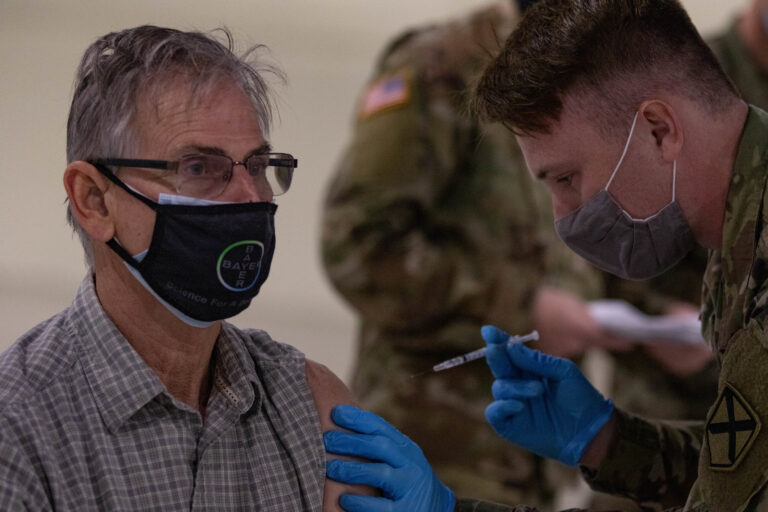COVID-19 vaccination rates are lower in rural counties than in urban counties, according to a new report from the Centers for Disease Control and Prevention.
Nationwide, the vaccination rate among adults in urban counties is 45.7%, but only 38.9% of adults are vaccinated in rural counties. The disparity persists among different age groups and genders.
“The uptake of vaccines in rural populations is not where we wanted to be at this time,” says Alan Morgan, CEO of the National Rural Health Association.
The lower vaccination rate is concerning, Morgan says, because rural communities have been hit especially hard by the COVID-19 pandemic. Top hospitals are generally harder to come by in rural areas, and in many cases, rural hospitals have struggled to keep up with caseloads. Rural communities also have lower income levels overall and can lack access to good healthcare.
“These are the worst possible places for a global pandemic to happen,” Morgan says. “This has a potential to be a very bad summer for rural America.”
The reason for the disparity, he says, stems from the lack of consistent messaging from the federal government.
“It shouldn’t be what Washington D.C. is telling us to do,” Morgan says. “From a rural standpoint, it should be the discussion of ‘How do we keep our communities safe? What do we need to do at the local level to protect our hospital workers and to make sure that our small businesses and the workers there are safe and able to keep their doors open?’”
Vaccine access in rural areas also remains a problem, says Morgan, and more targeted mobile clinics are needed to decrease the disparity.
The CDC’s findings largely fall in line with the Kaiser Family Foundation’s Vaccine Monitor, which has tracked vaccination rates across the nation since the start of the rollout.
Ashley Kirzinger, who helps put together the monitor, says the data suggests the disparity comes from the fact that both Republicans and white evangelicals — who make up much of the populations in rural areas — show the highest vaccine resistance. That trend persists across the country, she says, regardless of geographic location.
“The share of rural residents who identify as Republican, that seems to be driving it more than where you live,” she says.
Kirzinger says there are many implications for the rural lag in vaccination rates, including the fact that it could prolong the pandemic.
“Moving on to this goal of herd immunity… is really complicated because it’s not just one number across the United States,” she says. “It has to be this number and this percent of adults in the population within each community.”
Strategies to reach rural populations need to change, Kirzinger says, in order to boost vaccination rates. That includes increasing individual outreach efforts by trusted healthcare providers.
“Because we know that rural residents, you know, they trust their health care providers,” she says. “And so having those conversations, I think, is going to be a key part of this.”
Follow Dana on Twitter @DanaHCronin
9(MDM5MjE5NTg1MDE1Mjk1MTM5NjlkMzI1ZQ000))

